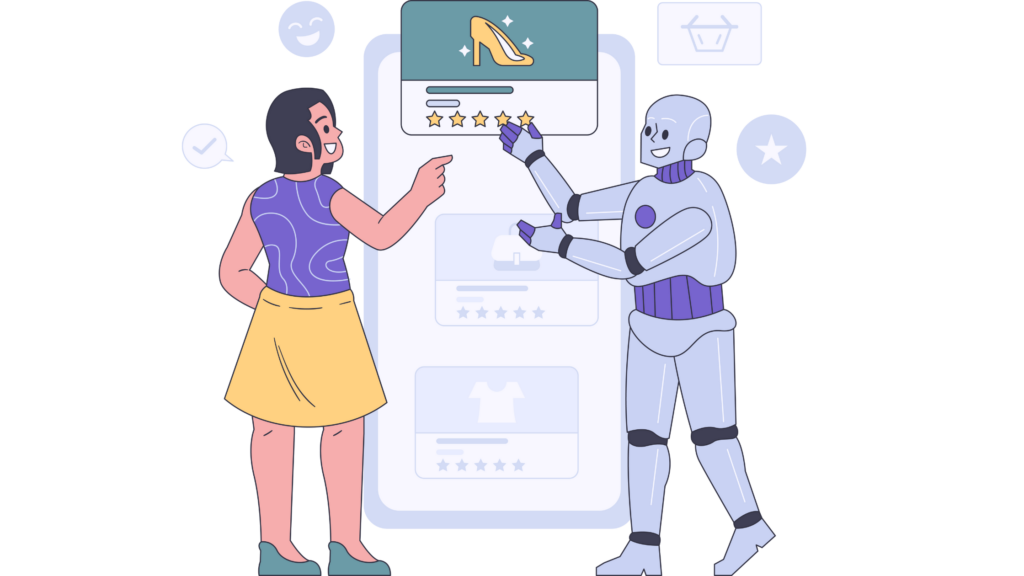AI in E-commerce: How Amazon is Using Machine Learning to Transform Customer Experience and Seller Success
Artificial Intelligence (AI) is changing e-commerce. It helps businesses sell smarter, serve customers better, and grow faster. Amazon, the largest online marketplace, is leading this change. The company uses machine learning to improve search results, recommend products, and manage inventory. AI helps customers and sellers by making shopping easy and selling more profitable.
Machine learning allows Amazon to predict customer needs. It helps sellers optimize their listings, manage stock, and set competitive prices. AI also improves customer service through chatbots and voice assistants. With AI, Amazon makes shopping more personal and efficient.
E-commerce is evolving. AI plays a big role in shaping its future. Amazon’s use of machine learning provides a roadmap for other businesses. Understanding how Amazon applies AI can help sellers grow and improve customer experiences.
How AI Enhances Product Recommendations on Amazon

Amazon’s recommendation engine is one of its most powerful tools. It analyzes customer behaviour to suggest relevant products. AI collects data from past purchases, search history, and customer interactions. This data helps Amazon predict what shoppers will buy next.
Machine learning personalizes recommendations. Customers see suggestions based on what they like. AI updates recommendations in real time. If a shopper searches for fitness gear, Amazon suggests weights, yoga mats, and running shoes. This method increases sales and improves customer satisfaction.
AI also helps sellers. It places products in front of the right audience. When shoppers get relevant suggestions, sellers make more sales. This boosts revenue and builds customer trust.
AI in Amazon’s Search Algorithm

Amazon’s search engine, A9, uses AI to rank products. Machine learning decides which products appear first. It looks at keywords, pricing, availability, and customer reviews. AI ensures shoppers find what they need quickly.
Sellers must optimize listings to rank higher. AI helps them by analyzing search trends. It suggests keywords that customers use. Sellers who use these keywords in titles and descriptions get better visibility. AI also detects keyword stuffing and improves search quality.
AI makes Amazon’s search faster and smarter. It understands customer intent and delivers accurate results. Sellers who follow AI-driven optimization see more traffic and higher sales.
AI-Powered Chatbots and Customer Support

Amazon uses AI chatbots to improve customer service. These bots answer common questions and resolve issues quickly. AI-powered assistants handle returns, track orders, and provide product information. This reduces wait times and improves customer satisfaction.
Machine learning helps chatbots learn from past interactions. Over time, they provide better responses. Amazon’s AI assistants also support multiple languages. This makes shopping easy for global customers.
AI in customer support also benefits sellers. It reduces the number of customer complaints. Automated responses solve basic issues without human help. This improves seller ratings and increases customer trust.
AI in Pricing Optimization

Amazon’s pricing strategy uses machine learning. AI monitors competitor prices, demand, and market trends. It adjusts prices to stay competitive. If demand for a product rises, AI increases the cost. If competitors lower prices, Amazon’s AI adjusts accordingly.
Sellers can use AI-driven pricing tools. These tools help them set competitive prices automatically. AI analyzes market trends and suggests the best price. Sellers who use AI pricing see higher profits and more sales.
AI in pricing also helps customers. It ensures they get the best deals. Automated price adjustments keep Amazon’s marketplace fair and competitive.
AI-Driven Inventory and Supply Chain Management

Amazon uses AI to manage inventory. Machine learning predicts demand for products. It ensures warehouses have enough stock. If AI detects high demand for a product, it orders more units. This prevents stockouts and lost sales.
AI also improves supply chain efficiency. It predicts delivery times and reduces delays. AI-powered robots in Amazon’s warehouses speed up order fulfilment. This makes deliveries faster and more accurate.
Sellers benefit from AI inventory management. AI tools help them avoid overstocking or running out of stock. Predictive analytics show which products will sell best. Sellers who use AI can manage inventory smarter and reduce costs.
AI and Amazon’s Voice Shopping Revolution

Amazon’s Alexa uses AI to make shopping easier. Customers can order products using voice commands. Alexa finds the best deals, adds items to carts, and completes purchases. Voice shopping saves time and improves convenience.
AI in voice shopping learns customer preferences. If a shopper frequently buys coffee, Alexa remembers and suggests reordering. Machine learning makes voice assistants smarter over time.
Sellers can optimize for voice search. AI helps them create voice-friendly product listings. Businesses that adapt to voice shopping will gain more customers.
AI in Fraud Detection and Security

Amazon uses AI to detect fraud. Machine learning identifies suspicious activities and prevents fake orders. AI scans transactions for unusual patterns. If it finds something suspicious, it flags the order for review.
AI also protects sellers. It detects fake reviews and removes them. Sellers benefit from a fair marketplace. AI also prevents account takeovers by identifying unusual login attempts.
Customers and sellers feel safer with AI security. Fraud prevention builds trust and ensures smooth transactions.
AI-Driven Advertising on Amazon

Amazon’s advertising platform uses AI to improve ad performance. Machine learning analyzes customer behaviour to show relevant ads. AI helps sellers target the right audience. This increases ad clicks and conversions.
Sponsored product ads, display ads, and video ads all use AI. Machine learning determines which ads perform best. It then adjusts bidding strategies for better results.
AI advertising helps sellers save money. It ensures ads reach interested buyers. This increases return on investment and improves sales.
AI and Warehouse Automation

Amazon’s warehouses use AI-powered robots. These robots pick, pack, and sort products. Machine learning helps them work faster and reduce errors. AI in logistics speeds up shipping and reduces costs.
Sellers benefit from fast order fulfilment. Amazon’s efficient system ensures quick deliveries. This leads to higher customer satisfaction and repeat purchases.
AI-powered robots also handle inventory tracking. They keep records of stock levels and restock automatically. This reduces manual work and improves accuracy.
Comparison of AI Benefits for Customers and Sellers
| AI Feature | Customer Benefit | Seller Benefit |
|---|---|---|
| Product Recommendations | Finds relevant products easily | Increases product visibility and sales |
| Search Optimization | Gets accurate search results | Improves product ranking and traffic |
| Chatbots and Support | Gets fast responses | Reduces customer complaints |
| Pricing Optimization | Find the best deals | Helps set competitive prices |
| Inventory Management | Ensures product availability | Prevents overstock and stockouts |
| Voice Shopping | Buys products hands-free | Gains more voice search traffic |
| Fraud Detection | Secure shopping experience | Prevents fraud and fake reviews |
| AI Advertising | Sees relevant ads | Increases ad conversions |
| Warehouse Automation | Gets faster deliveries | Ensures quick order fulfillment |
Conclusion
AI is transforming e-commerce. Amazon leads the way with machine learning innovations. AI improves customer experience and boosts seller success. From personalized recommendations to automated warehouses, AI enhances every part of the shopping process.
Sellers who adopt AI tools will stay ahead. Optimizing listings, setting competitive prices, and managing inventory with AI ensures success. Machine learning is the future of e-commerce, and those who use it will thrive.
Amazon continues to evolve with AI. As AI technology grows, both customers and sellers will benefit. To learn more about optimizing your Amazon store, visit Amazon Consultant today.
Here are some frequently asked questions
Some simple but important FAQs
How does AI help Amazon sellers?
AI helps sellers optimize listings, set competitive prices, and manage inventory efficiently. It also improves advertising and customer service.
Can AI improve customer experience on Amazon?
Yes, AI personalizes product recommendations, enhances search accuracy, and speeds up customer support with chatbots.
How does Amazon use AI in fraud prevention?
Amazon’s AI detects fake reviews, prevents fraudulent transactions, and secures seller accounts from unauthorized access.
Is AI-driven pricing beneficial for sellers?
Yes, AI monitors market trends and competitor pricing to help sellers adjust prices automatically for maximum profitability.
How can sellers use AI for advertising on Amazon?
Sellers can use AI-driven advertising tools to target the right audience, optimize ad performance, and increase conversions.


Leave a Reply